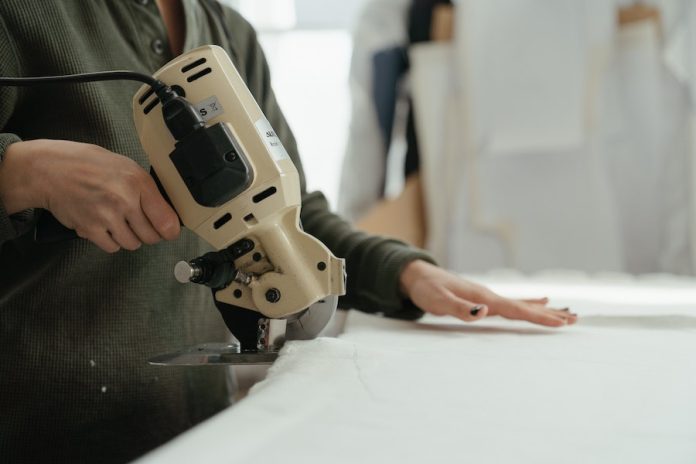In the world of textiles, achieving that perfect finish on fabrics is an art in itself. One crucial step in this journey is the singeing process. While it might sound like a fiery affair, singeing is a meticulously controlled process that brings textiles one step closer to perfection. In this SEO blog post, we’ll delve into the singeing process in textiles, its significance, and the benefits it offers to the industry.
What Is Singeing?
Singeing is a textile finishing process designed to remove protruding fibers from the surface of the fabric. These unwanted fibers, often referred to as “hairs” or “fuzz,” can cause various issues such as pilling, reduced dye uptake, and an uneven appearance in the final product. Singeing eliminates these problems by carefully burning off these protruding fibers.
The Singeing Process In Textile Industry:
The singeing process is a crucial step in textile manufacturing that significantly impacts the quality and appearance of fabrics. Here, we’ll delve into the details of this intricate process:
Protruding Fiber Removal:
The primary objective of singeing is to eliminate protruding fibers, often referred to as “hairs” or “fuzz,” from the surface of the fabric. These unwanted fibers can cause various issues such as reduced dye uptake, pilling, and an uneven texture.
Pre-Singeing Preparation:
Before the fabric enters the singeing machine, it undergoes essential preparatory steps. This typically includes desizing and scouring to remove any sizing agents, impurities, or contaminants that may be present on the fabric.
The Singeing Machine:
The heart of the singeing process is the singeing machine itself. This machine features a series of gas burners or an open flame system. These burners produce controlled flames that will interact with the fabric’s surface.
Controlled Flame Application:
As the fabric moves through the singeing machine, it comes into contact with the flames. The heat generated by these flames effectively burns off the protruding fibers, leaving behind a smoother surface. This controlled flame application ensures that the fabric is not damaged or scorched in the process.
Precision Control:
Modern singeing machines are equipped with advanced control systems that allow for precise adjustments in various parameters. These parameters include flame intensity, fabric speed, and flame height. Such precision ensures uniform singeing across the entire width of the fabric.
Cooling and Inspection:
After the singeing process is complete, the fabric is cooled down to room temperature. This cooling phase is essential to stabilize the fabric. Following cooling, the fabric undergoes a thorough inspection to identify any defects, missed spots, or irregularities. Any remaining impurities or residues are removed in subsequent manufacturing steps.
Benefits of Singeing:
The singeing process offers several noteworthy advantages to the textile industry, including improved appearance, enhanced dyeing capabilities, reduced pilling, increased print quality, and improved overall comfort for the end user.
Benefits of Singeing In Textile Industry:
The singeing process in textiles offers a range of benefits that enhance the quality and performance of fabrics. Let’s explore these benefits in detail:
- Improved Appearance: Singeing results in a smoother and cleaner fabric surface by removing protruding fibers and surface impurities. This leads to a more visually appealing and luxurious finish, making it particularly important for high-quality textiles and fashion fabrics.
- Enhanced Dyeing: The elimination of protruding fibers through singeing allows for improved dye penetration during the dyeing process. This results in more even and vibrant coloration, as the dye can better reach the fabric’s fibers, leading to consistent and rich color shades.
- Reduced Pilling: Pilling, the formation of small, fuzzy balls on the fabric’s surface, is a common issue with textiles. Singeing significantly reduces the likelihood of pilling by removing loose fibers that can tangle and create those unsightly balls, thus increasing the fabric’s durability and longevity.
- Increased Print Quality: For printed fabrics, singeing ensures that the ink adheres evenly to the fabric’s surface. This results in sharp and clear prints with vibrant colors and intricate details. The absence of protruding fibers prevents ink from bleeding or spreading unevenly.
- Improved Comfort: Singeing eliminates any irritating fibers that might otherwise poke through the fabric, enhancing the comfort of garments made from the treated fabric. It’s particularly essential for items like undergarments and activewear, where comfort is a top priority.
- Enhanced Wettability: Singeing improves the wettability of fabrics, allowing liquids, including water and dyes, to spread evenly across the surface. This characteristic is particularly beneficial for fabrics used in applications like medical textiles, where uniform liquid absorption is critical.
- Reduced Dust and Lint: The removal of protruding fibers and surface impurities through singeing reduces the fabric’s propensity to collect dust and lint. This is advantageous for textiles used in cleanroom environments, electronics manufacturing, or sensitive medical applications.
- Better Print Definition: In the case of digital printing or high-resolution screen printing, singeing ensures that fine details and intricate patterns are accurately reproduced on the fabric, resulting in sharp and high-definition designs.
- Consistency: The use of modern singeing machines with precise control systems ensures uniform treatment across the entire fabric width, eliminating variations and inconsistencies in the singeing process.
- Energy Efficiency: Newer singeing machines are designed to be more energy-efficient, using less fuel while maintaining or improving singeing quality. This aligns with sustainability goals in the textile industry.
The singeing process in textiles offers a multitude of advantages that impact the fabric’s appearance, performance, and overall quality. It is a crucial step in textile manufacturing, contributing to the production of textiles that meet the highest standards of aesthetics and functionality.
Conclusion
The singeing process in textiles is a vital step that contributes to the overall quality and performance of fabrics. By taming unruly fibers and creating a smooth surface, singeing improves the appearance, dyeing, and comfort of textiles. With the use of advanced technology and precise control, the textile industry continues to benefit from this age-old flame-taming magic, ensuring that fabrics meet the highest standards of quality and aesthetics.


